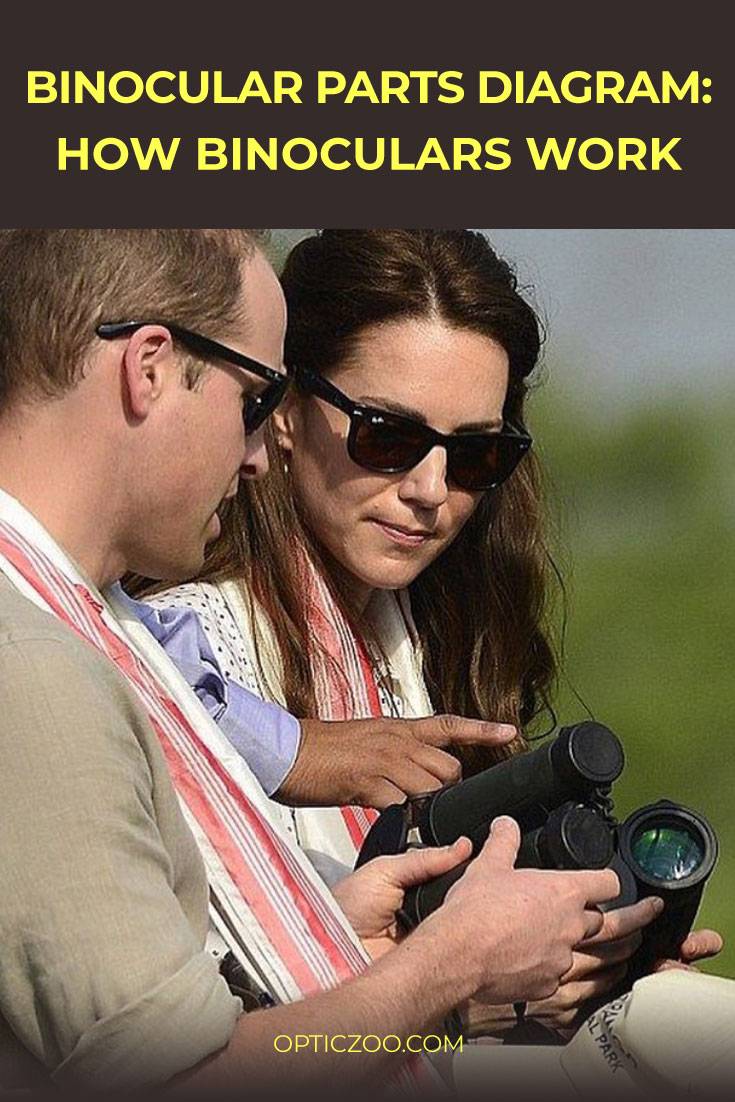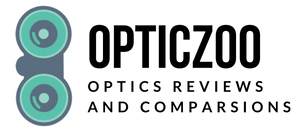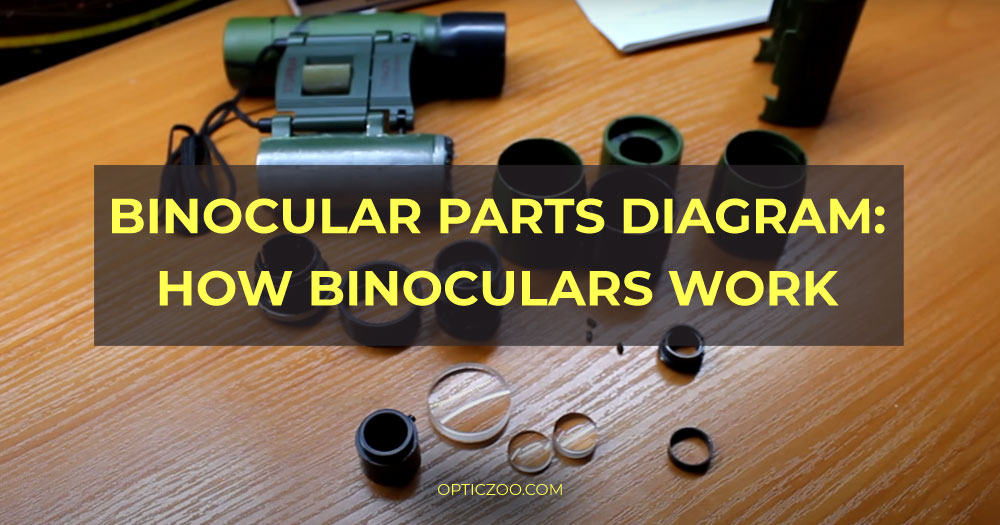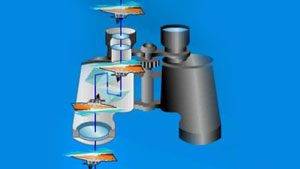
Do you enjoy bird watching, or simply like to keep an eye on things from a distance? If so, you’ll need a good pair of binoculars. Binoculars are a great tool for getting a closer look at objects that are far away. But how do they work? In this blog post, we will take a look Binocular Parts Diagram, and explain how the different parts of a binocular work together to give you a clear view of your target.
Binocular Parts diagram
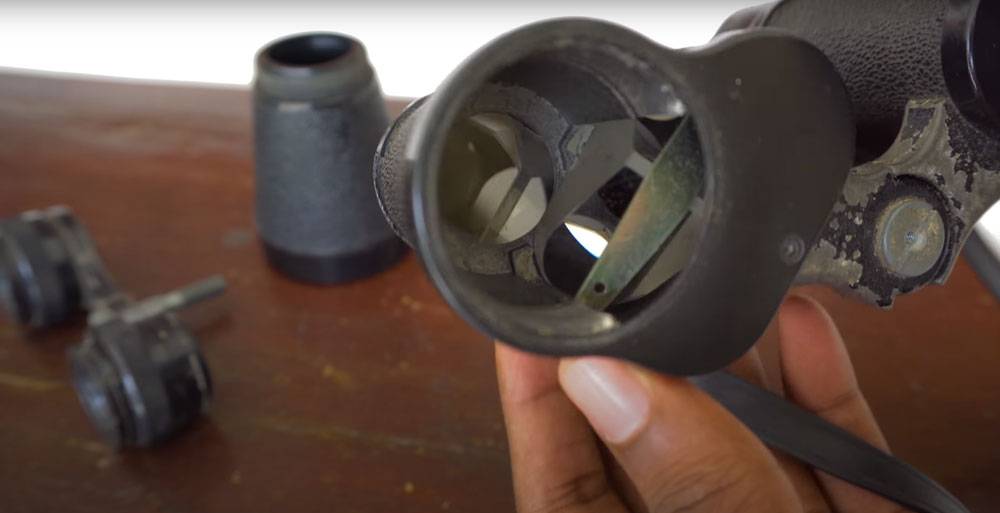
Binoculars allow you to see objects in greater detail than you would be able to with the naked eye. Looking for a binocular parts diagram? You’ve come to the right place! This diagram will show you the different parts that make binoculars up. Let’s take a closer look at how they work!
Objective Lenses
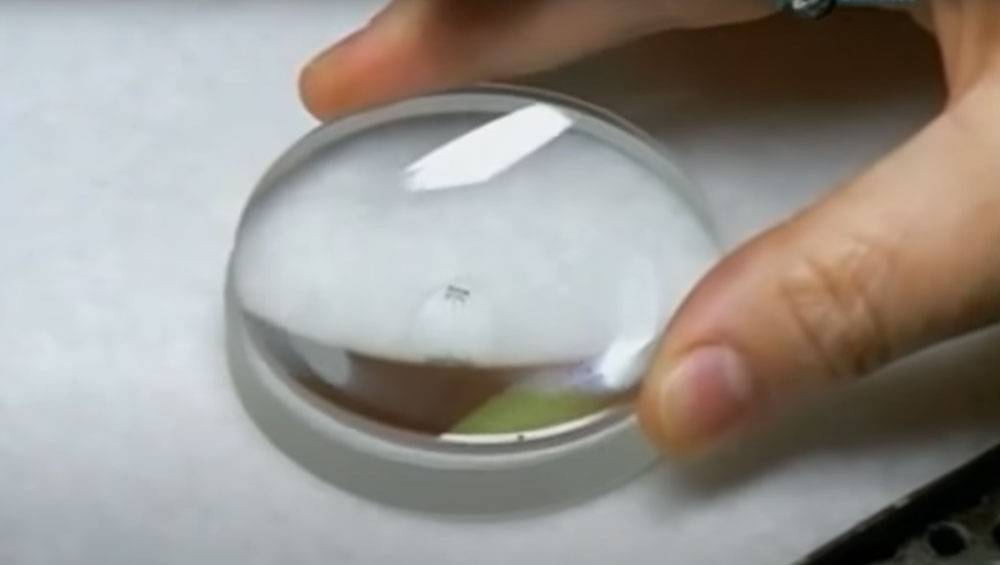
The first part of the binoculars that we will look at is the objective lens. The objective lens is the large lens at the front of the binoculars.
[wpsm_box type=”info” float=”none” text_align=”left”]
This lens gathers light from the object you are looking at. In order to provide the best image quality, the objective lenses should be large and have a low level of distortion.
[/wpsm_box]
Prism Pairs
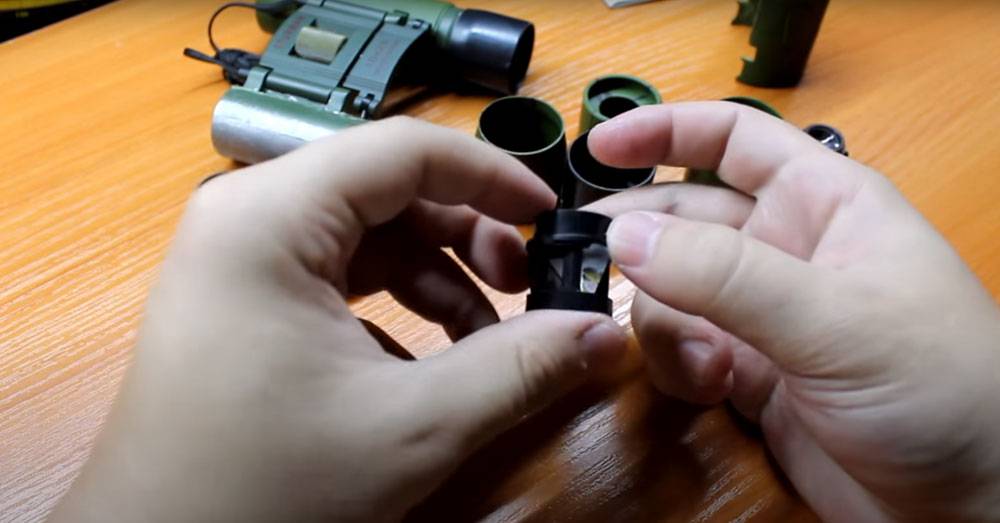
The next part of the binoculars is the prism system.
[wpsm_box type=”info” float=”none” text_align=”left”]
The prism system is used to reflect light so that it reaches your eye in the correct orientation.
[/wpsm_box]
Without a prism, images would appear upside down and backward. By using a prism, binoculars are able to provide a correctly oriented image.
There are two types of prism pairs used in binoculars- roof prisms and Porro prisms. Roof prisms are more common in modern binoculars, while Porro prisms offer a brighter image and are less expensive to produce.
Eyepiece/Ocular Lens
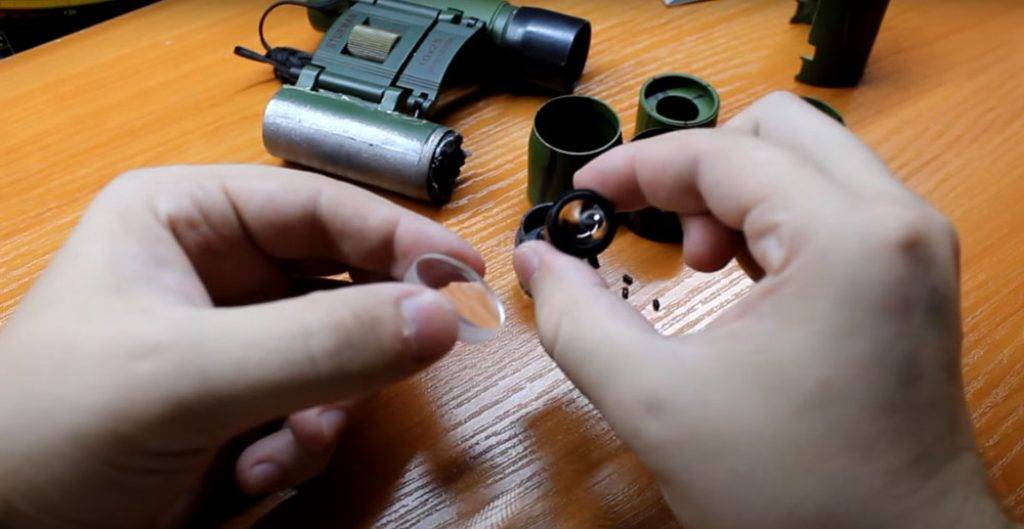
The eyepiece, also called the ocular lens, is the part of the binoculars that you look through in order to see the image that is being magnified by the objective lens. It is located at the end of the tubes that house the lenses. The eyepiece usually has a focusing mechanism so that you can adjust the focus of the binoculars.
Thumbwheel/Focus Wheel
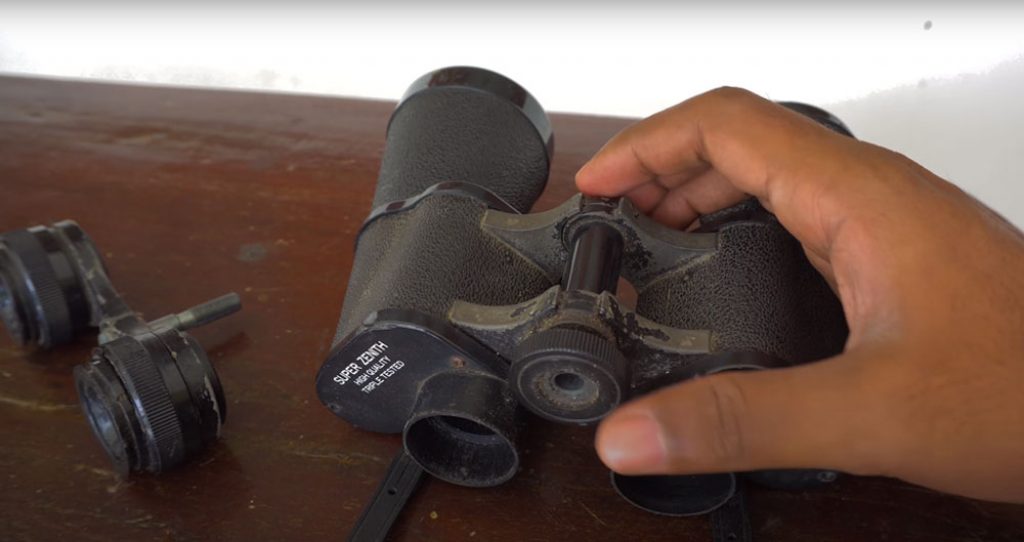
The thumbwheel or focus wheel is a small knob on the top of the binoculars that are used to adjust the focus. By turning the thumbwheel, you can move the lenses closer together or further apart, depending on your needs. This allows you to sharpen the image of what you’re looking at, whether it’s up close or far away.
The focus wheel is also used to adjust the interpupillary distance or the distance between the two lenses. This can be important if you have a pair of binoculars that don’t fit your face perfectly, as you can adjust it until they do.
Binoculars Barrel (Chassis)
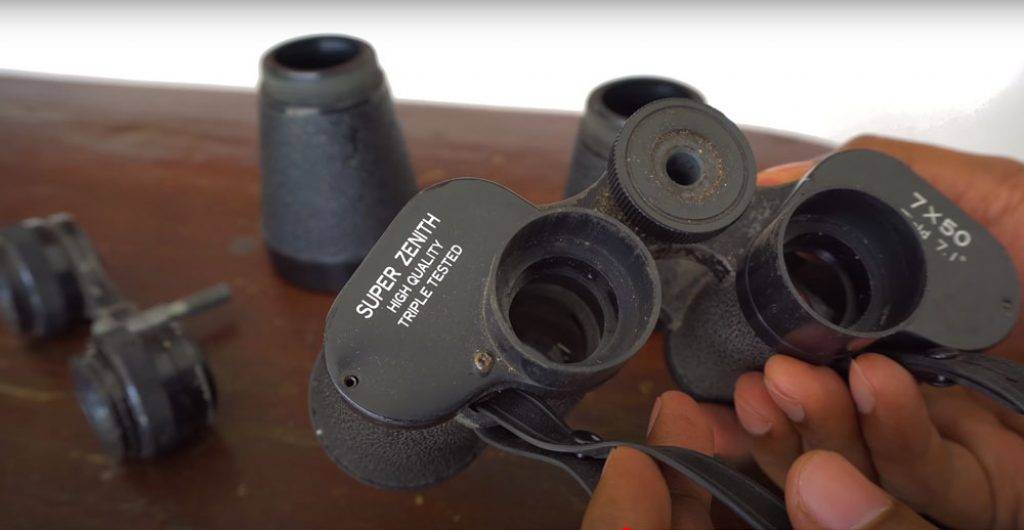
The binocular barrel is the main part of the binocular and is made up of two tubes that hold the lenses. The barrels are usually made from metal or plastic, and they have a number of different coatings to improve image quality. One coating might be for glare reduction, while another may be used to increase light transmission.
[wpsm_box type=”info” float=”none” text_align=”left”]
The chassis is also important, as it provides stability to the binoculars. This is especially important when using high-powered binoculars, as even a small amount of shaking can cause images to blur.
[/wpsm_box]
The chassis will also help protect the internal workings of the binoculars from weather conditions and accidental damage.
Diopter Adjustment Knob
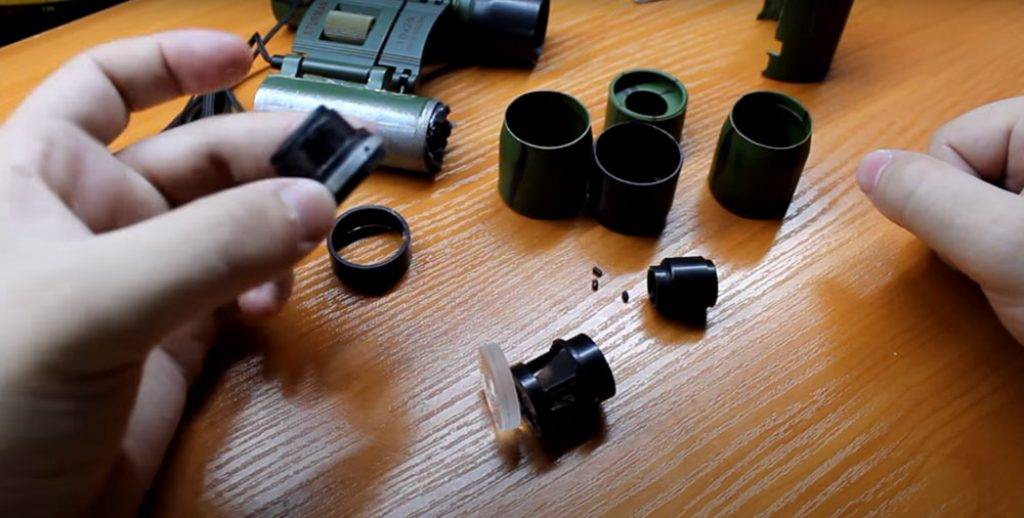
The next thing you’ll notice on the binoculars is the diopter adjustment knob, usually located near the right barrel. This knob is used to adjust the focus of each eyepiece independently. That way, if your eyes are not exactly matched, you can still see a clear image.
Some binoculars also have a focus adjustment ring instead of a knob. This is used to adjust the focus for each eye individually, just like the diopter adjustment knob.
[wpsm_box type=”warning” float=”none” text_align=”left”]
However, with a ring you can rotate it either way to achieve focus; with a knob, you can only turn it in one direction.
[/wpsm_box]
If your binoculars don’t have a diopter adjustment knob or ring, there’s probably an eyepiece cover that you can remove to adjust the focus. Look for an inscription on the eyepiece barrel that says “dioptre.”
Eyecup
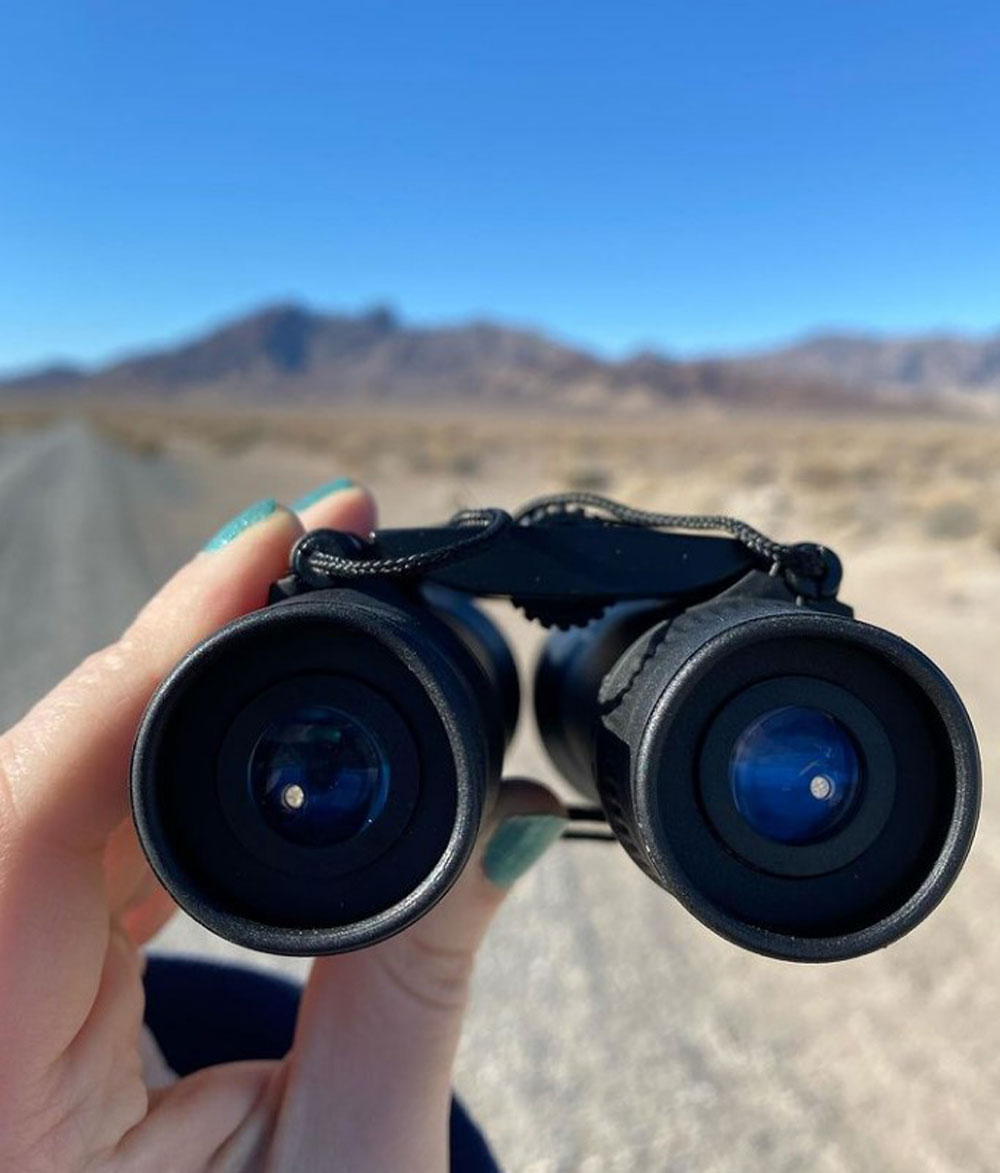
The final part of the binoculars that we’ll discuss is the eyecup. This is the piece that rests against your eye and helps keep out ambient light. Some eyecups twist off so that they can be replaced with a custom-made one if needed, while others are hinged and folded down for storage.
Some binoculars also have an eye relief adjustment, which is used to adjust the distance between the eyepiece and your eye.
[wpsm_box type=”info” float=”none” text_align=”left”]
This is important because if the eyepiece is too close or too far away, you won’t be able to see the entire image in the viewfinder and it will be blurry.
[/wpsm_box]
How binoculars work
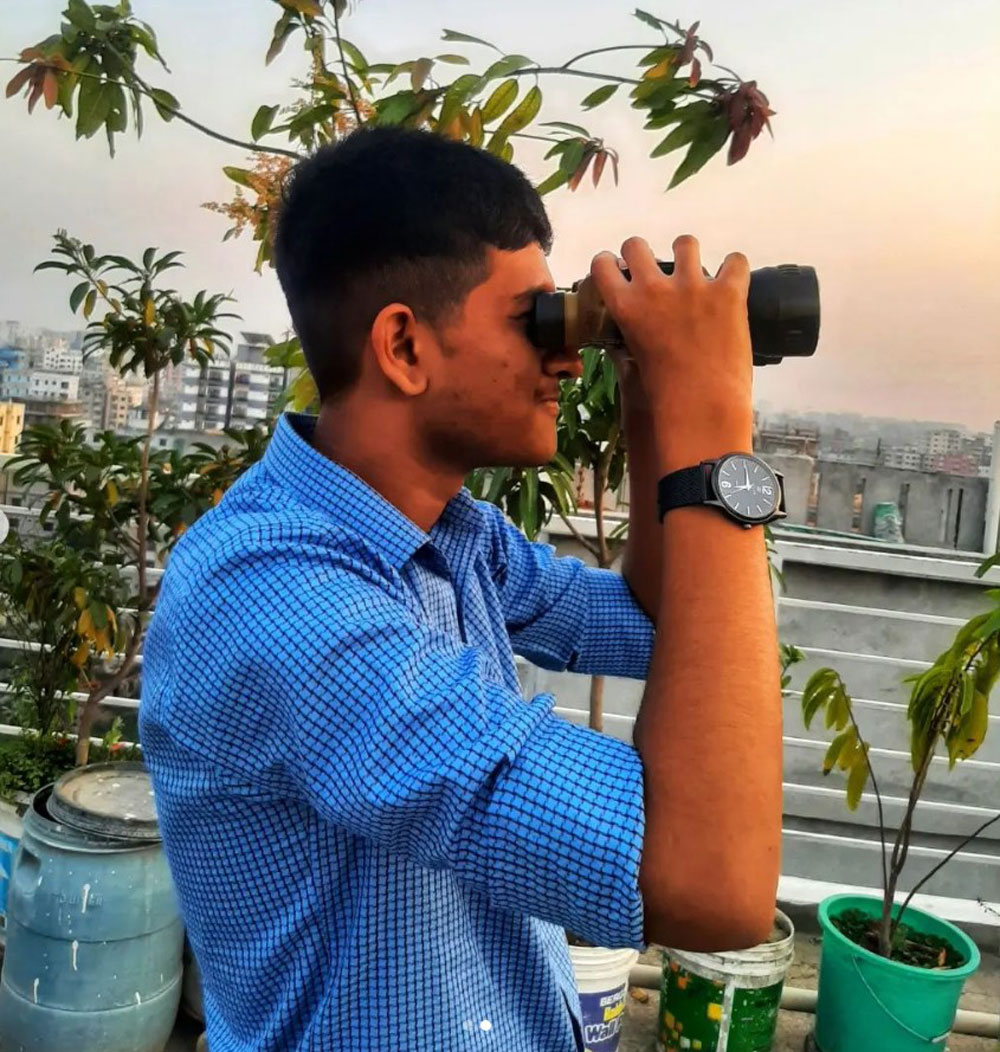
Now that we have looked at all of the parts of a binocular, let’s put it all together and see how they work.
- As light enters the binoculars, it passes through the objective lenses.
- The lenses gather the light and focus it on the prisms.
- The prisms reflect the light and magnify the image.
- The eyepieces then magnify the image even more so that you can see it clearly.
That is how a binocular work!
How We Rank Binoculars?
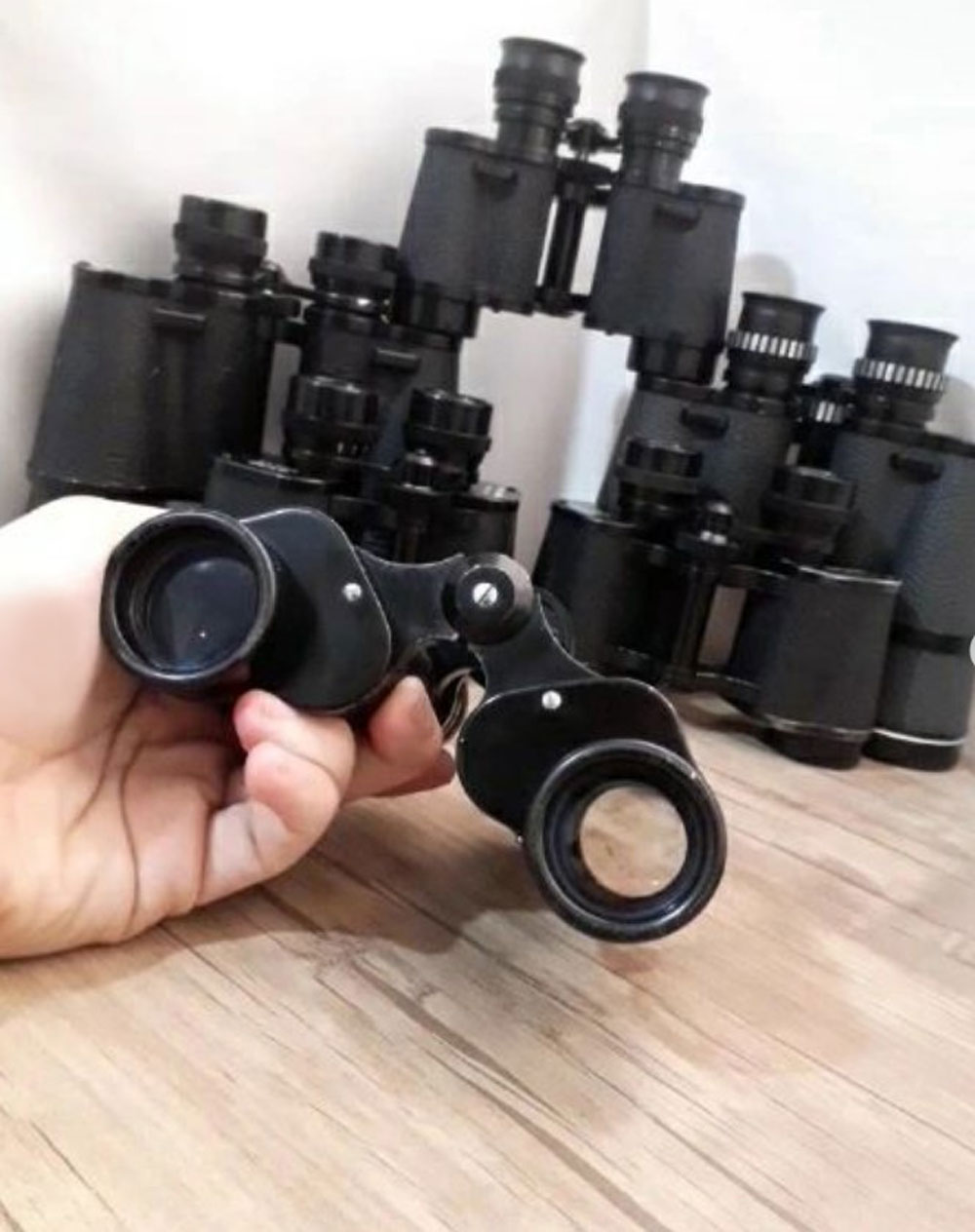
We take into account several factors when ranking binoculars. This includes the build quality, field of view, weight, and of course price.
There are two main types of binoculars: roof prism and Porro prism. Roof prism binoculars are generally more expensive but offer a sleeker design and better image quality. Porro prism binoculars are usually cheaper and have a more traditional look.
When it comes to choosing the right pair of binoculars for you, it’s important to consider what you’ll be using them for. If you’re mainly going to use them for bird watching, then you’ll want a pair with a wide field of view. If you’re looking for binoculars to take on hikes, then weight might be more important to you than image quality.
Some popular types of binoculars include:
- Birding Binoculars
- Hunting Binoculars
- Hiking Binoculars
How to Select the Perfect Binoculars for the Money?
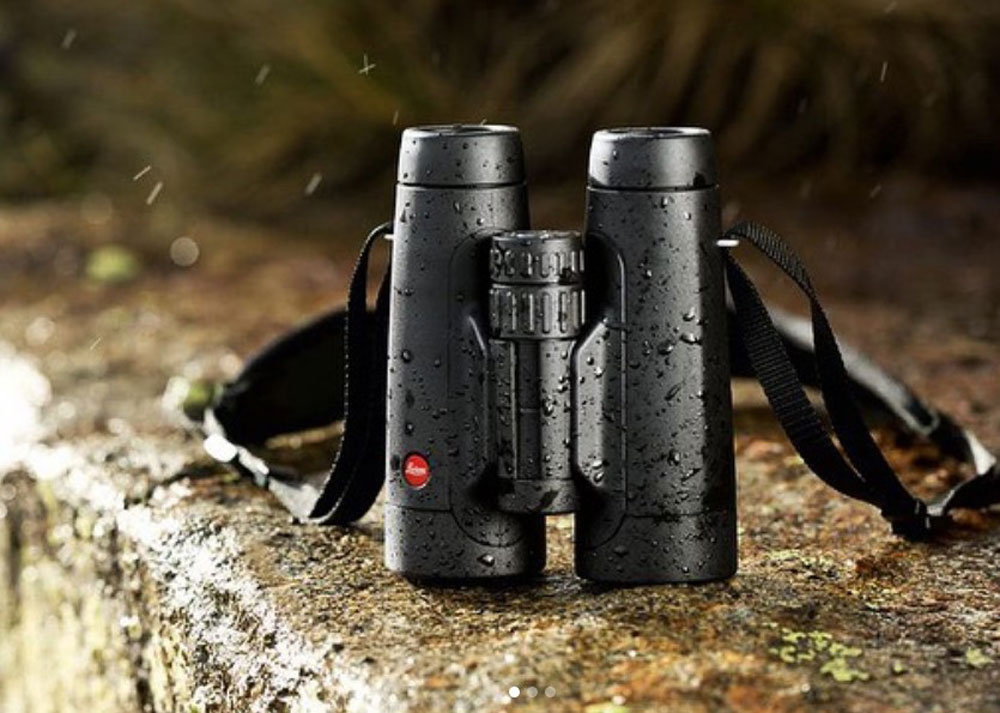
There are a few key factors you’ll want to consider when selecting binoculars.
[wpsm_box type=”info” float=”none” text_align=”left”]
The most important factor is the quality of the optics, which includes the lenses and prisms. Also important is the size and weight of the binoculars.
[/wpsm_box]
You’ll also want to think about what type of eyecups will be most comfortable for you and whether or not you need or want a tripod adapter. Finally, consider your budget and what features are most important to you.
Once you’ve considered all of these factors, it’s time to start shopping around! Compare prices and reviews from different retailers until you find the perfect pair of binoculars for your needs.
Conclusion
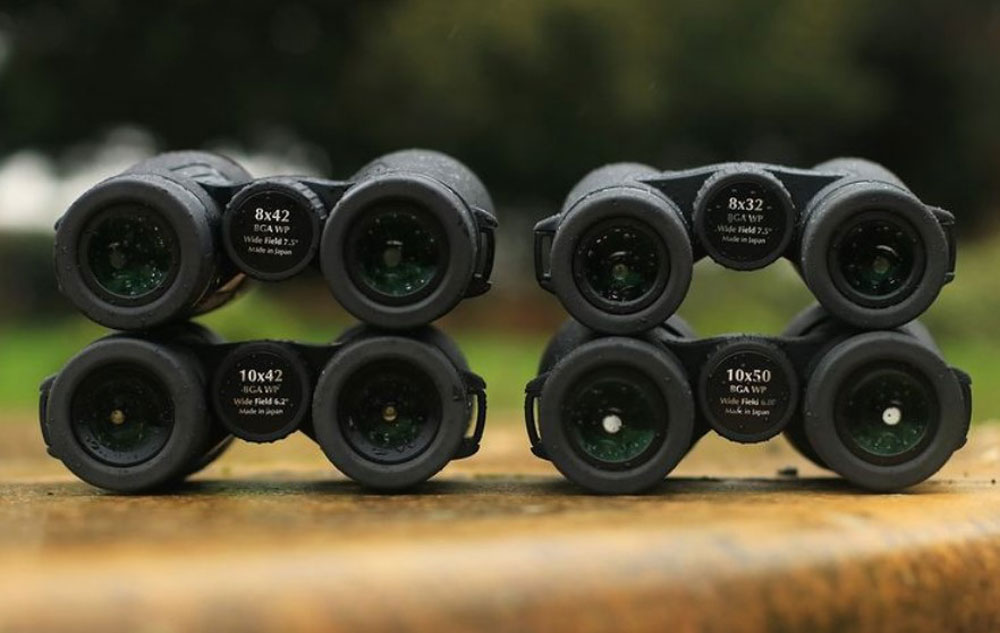
That’s it for our tour of the parts of binoculars! Now that you know what everything does, you can use this knowledge to get the most out of your next outdoor adventure.
I hope that this article has helped you to understand how a binocular works. If you have any questions, please leave them in the comments below. Thanks for reading!
